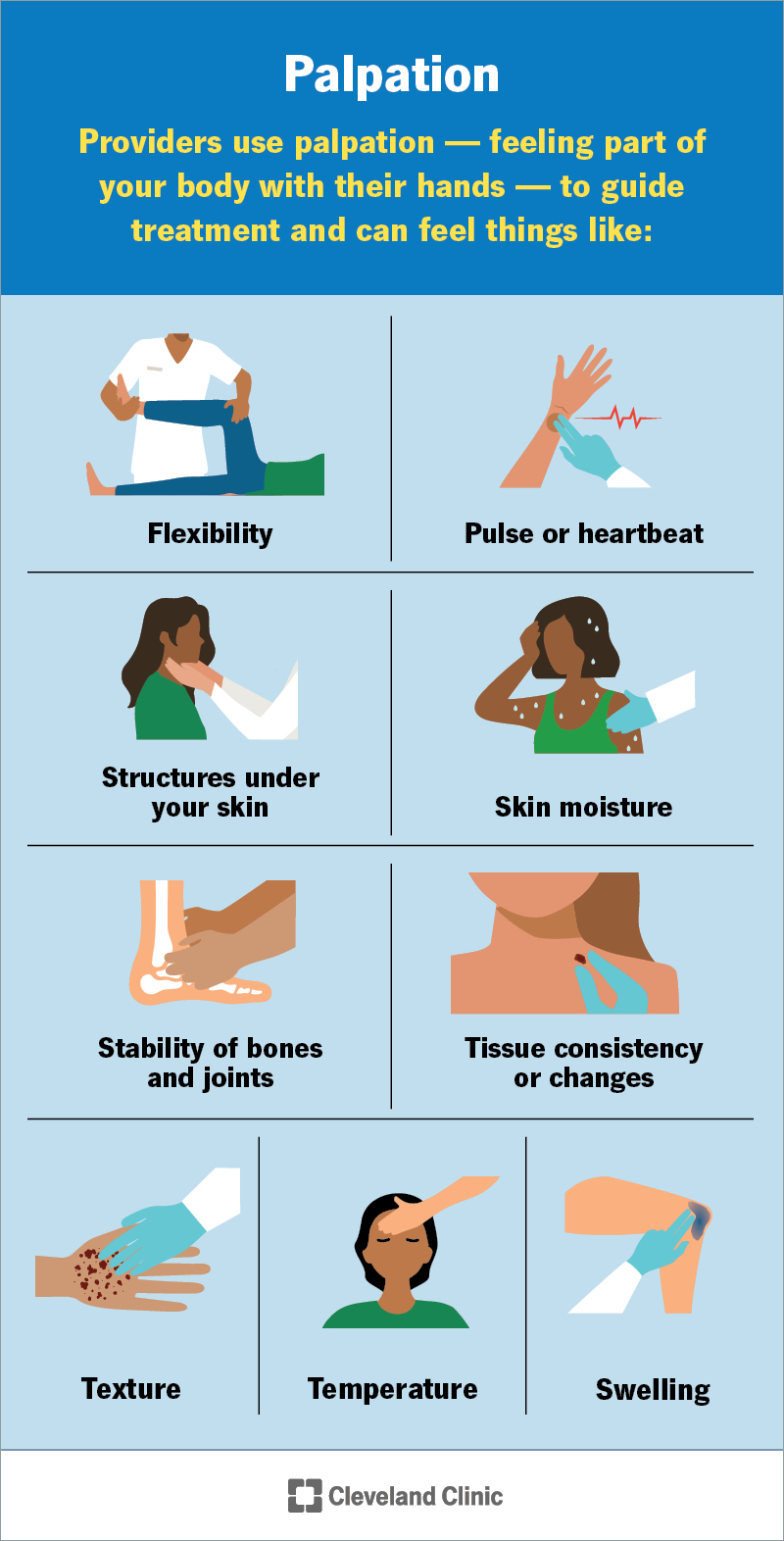When healthcare providers use palpation, that technique turns their sense of touch into one of the most powerful medical tools around. Palpation lets them see with their hands, guiding the way they diagnose and treat health conditions. That’s what makes it such a common and important part of all facets of medical care.
Advertisement
Cleveland Clinic is a non-profit academic medical center. Advertising on our site helps support our mission. We do not endorse non-Cleveland Clinic products or services. Policy

Palpation is when a healthcare professional uses their hands to feel part of your body. They can use palpation to feel for normal body functions. But they can also feel for changes or differences that point to a disease. Providers also use palpation to guide treatment.
Advertisement
Cleveland Clinic is a non-profit academic medical center. Advertising on our site helps support our mission. We do not endorse non-Cleveland Clinic products or services. Policy
Healthcare professionals learn early on that their hands are essential diagnostic tools. They can use their hands to palpate and narrow down the location of pain or an injury. They can also feel things like:
Healthcare professionals commonly learn anatomy “landmarks.” They can feel for and use those landmarks as reference points. One example is how a provider can palpate your arm or hand to feel for a vein. That lets them know where to insert an intravenous (IV) line so it goes into that vein.
Palpation is a vital part of good medical care. If you’re worried or nervous about your provider touching you, don’t hesitate to tell them that upfront. They can answer any questions you might have that might set your mind at ease. If you still aren’t comfortable being touched, you can tell your provider that. You have every right to say no.
Palpation can take many forms depending on the body part your provider palpates. Some examples include:
Advertisement
Palpation can take many more forms, depending on:
If you have questions about what your provider will palpate for or how they’ll do it, ask them. Your provider can tell you more about what they’ll do and why. They can also reassure you if you’re worried or anxious.
Palpation is a standard part of many parts of modern medicine. Some examples of common times when healthcare providers use it include, but aren’t limited to, the following:
Long before X-rays or MRIs existed, healthcare providers learned that their sense of touch was a powerful diagnostic tool. And your healthcare provider’s hands can still outperform even the fanciest gadgets available today. That’s because human fingertips can feel things at the microscopic level, much smaller than what our eyes can see.
If you have questions or concerns about how or why your healthcare provider might use palpation during your medical care, let them know upfront. They can tell you more about how and why they might use palpation. They can also offer options that could ease your worries and make the process easier for you.
Advertisement
Cleveland Clinic’s primary care providers offer lifelong medical care. From sinus infections and high blood pressure to preventive screening, we’re here for you.

Last reviewed on 08/21/2025.
Learn more about the Health Library and our editorial process.